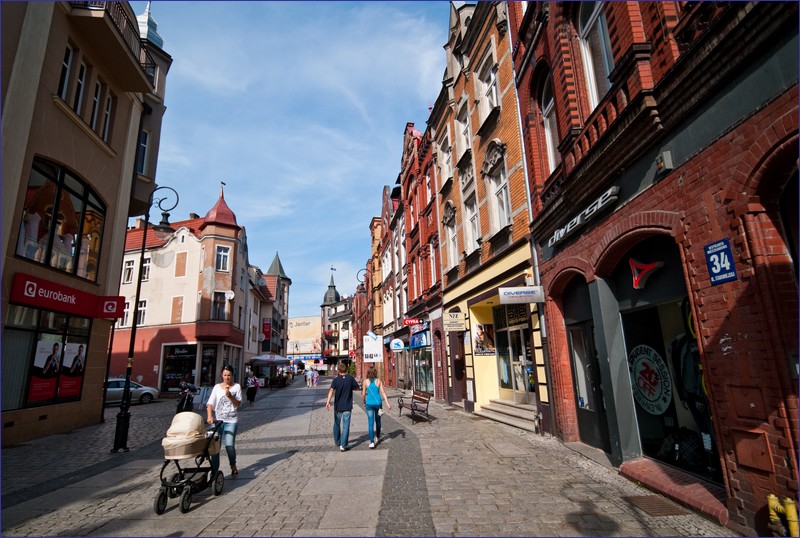Gdansk is a historic city on Poland’s Baltic coast, known for its beautiful Old Town. As one of the country’s oldest cities, Gdańsk boasts impressive architecture, including colorful merchant houses, Gothic churches, and the iconic Neptune Fountain on Long Market (Długi Targ). The city was a major trading hub during the Hanseatic League era and later became the birthplace of the Solidarity movement, which helped lead to the fall of communism in Eastern Europe. Visitors can explore landmarks such as St. Mary’s Church — one of the largest brick churches in the world — the medieval Crane on the Motława River, and the modern Museum of the Second World War. Gdansk is also a perfect starting point for day trips by train to many interesting places in Pomerania voivodeship.
In this article, I’ve included the most important ones that can be reached by regional trains within two hours, counting from the first to the last station within the borders of Gdansk and the destination. Sometimes I recommend to travel by fast trains operated by PKP Intercity because regional trains are often overcrowded (don’t take EIP trains for short journeys – these trains are very expensive).
Day trips from Gdansk by train – direction Hel Peninsula
Probably the most popular destination for day trips by train from Gdansk and the entire Tricity area (Gdansk, Gdynia, Sopot), at least during the summer season (perhaps alongside Malbork). Regional trains run on the Gdynia–Hel and Gdynia–Władysławowo routes, so a transfer in Gdynia is usually necessary (although direct trains run in summer). It’s one of the most beautiful railway lines in Poland — on the Puck – Hel stretch you can see the Puck Bay almost continuously from the train windows.
Gdynia (optional) – a relatively young city, which at first glance might seem less interesting. The beautiful Gdynia Główna train station is worth seeing, and on the way to the sea, it’s worth paying attention to the architecture — you’ll find many examples of so-called “maritime-style” buildings. The most notable is the so-called “Bankowiec” building. Gdynia is also one of the three Polish cities where operate trolleybuses. The main attractions are located near Kościuszko Square — including the famous sailing ship Dar Pomorza and the ORP Błyskawica destroyer, both open to visitors. Nearby, you’ll also find the modern Emigration Museum, the Naval Museum, and the Gdynia City Museum. For transport enthusiasts, a short ride on the cable railway to Kamienna Góra can also be an attraction. A promenade leading all the way to Sopot begins near Kościuszko Square.
Puck (optional) – a pleasant town that can also serve as a base for excursions, provided you can find affordable accommodation. The heart of the town is a rectangular, concreted market square. It’s worth visiting the Church of St. Peter and Paul, as well as the Puck Land Museum, which has several branches.
Władysławowo – a popular holiday destination with a recently renovated railway station. Its biggest attractions are the very beautiful — though extremely crowded in the summer — beaches. You can visit the socialist-realist Fisherman’s House (Dom Rybaka), which has an observation terrace offering panoramic views of the entire Hel Peninsula. The building also houses a small Butterfly Museum. There’s also a small branch of the Puck Land Museum in Władysławowo. Nearby, the Rozewie Lighthouse is definitely worth a visit.
Jastarnia – another seaside resort town, where you can see the neo-Gothic Church of the Visitation of the Blessed Virgin Mary from 1932, with interior elements inspired by maritime style. You can also visit one of the traditional fishing huts, which operates seasonally.
Hel – the final station. It features beautiful beaches, and must-visit attractions include the Coastal Defense Museum, which operates a short seasonal narrow-gauge railway line, and the seal sanctuary (fokarium). You might also consider visiting the Fisheries Museum, housed in a former church.
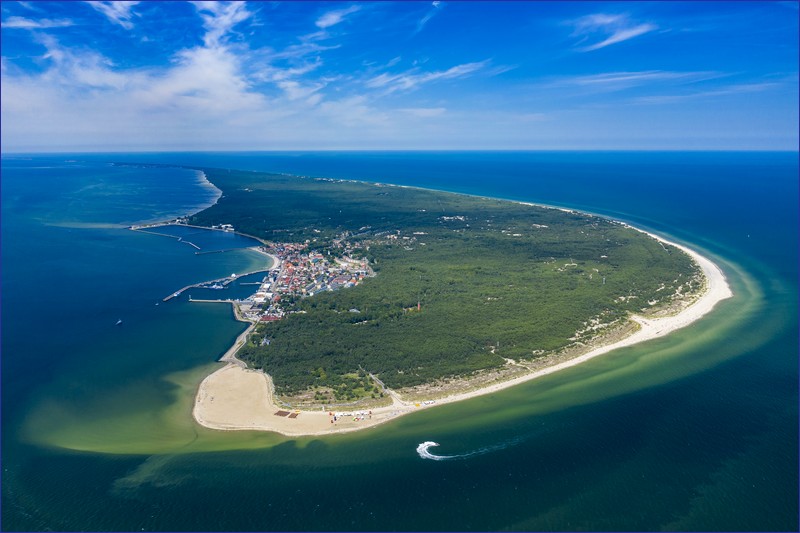
Direction – Bydgoszcz
Bydgoszcz is a city primarily for weekend trips, but one day is enough for fast stroll around the Old Town. Regional trains are usually overcrowded, especially on the Gdansk – Tczew stretch, so if you want to take a one day trip to Bydgoszcz, fast train is recommended. It’s a pity that the railway lines to interesting towns such as Gniew, Nowe, and Świecie have been closed (and some of them dismantled).
Sopot – a popular seaside resort town. The railway station resembles a shopping mall (though the historic, stylish platform has been preserved), and from the station, it’s just a short walk to Monciak – the pedestrian street leading to the famous pier. Along the way, you pass St. George’s Church and the “Crooked House” (Krzywy Domek). Near the pier, it’s worth noticing the balneology center, the beautiful Grand Hotel, and the lighthouse. In various parts of Sopot, you’ll find historic villas, and visitors can also explore an early medieval fortification site (grodzisko). Very high prices.
Tczew (optional) – an average town, with the center about a 15-minute walk from the train station. From a distance, you can see the historic railway bridges over the Vistula River, including the monumental, now-closed road-rail bridge. The center itself is fairly ordinary, but features a nice Polish Post Office building, several churches, and a revitalized boulevard along the Vistula. For those interested in river and maritime topics, you can visit the Shipwreck Conservation Center and the Vistula River Museum – both branches of the National Maritime Museum.
Pelplin – in this small town, it’s worth visiting the Cistercian Abbey complex with the Cathedral Basilica of the Assumption of the Blessed Virgin Mary and the Diocesan Museum.
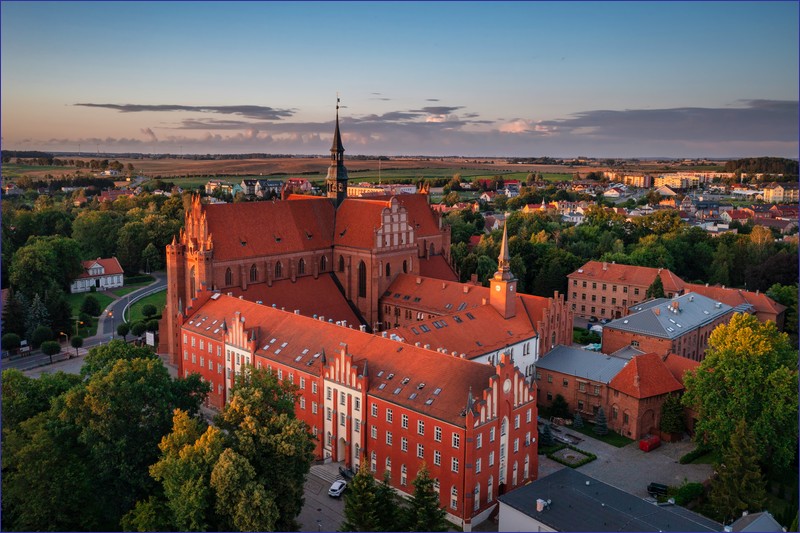
Bydgoszcz – a nice large city with many historical buildings. From the main train station, you can walk to the most interesting places in the city center in 15-20 minutes, or you can take a tram. The best route is undoubtedly a walk along the banks of the Brda River. Following the boulevard, you will reach Mill Island, which I consider the most beautiful spot in Bydgoszcz. Mill Island underwent revitalization, and the results are spectacular. In the summer season, the area comes to life, offering several interesting and affordable museums, as well as the famous Bydgoszcz Venice.
The rest of downtown is also appealing. The most important place is the Old Market Square, where the western frontage was demolished during the occupation, exposing the Jesuit College building. The most significant historical site is the Cathedral of St. Martin and St. Nicholas, built between 1466 and 1502. The city’s past is remembered with a model showcasing, among other things, the now-vanished Bydgoszcz Castle.
Bydgoszcz is a city of museums. The Museum of Soap and History of Dirt is often highlighted in guides, but it’s worth visiting at least a few branches of the District Museum, such as the European Money Center in the former mint building with an exhibition showcasing the unique “Bydgoszcz Treasure”, the Granaries on the Brda (exhibitions about the history and life in interwar Bydgoszcz), and the archaeological collections. Art lovers should visit the Leon Wyczółkowski House. Outside the District Museum, you’ll also find the Waterworks Museum (one branch located in the renovated water tower) and the Museum of the Polish Army. Recently, the Swan Pharmacy Museum and the Bydgoszcz Canal Museum have been added to the city’s museum scene. Bydgoszcz offers many other attractions (including the Exploseum and Myślęcinek Park).
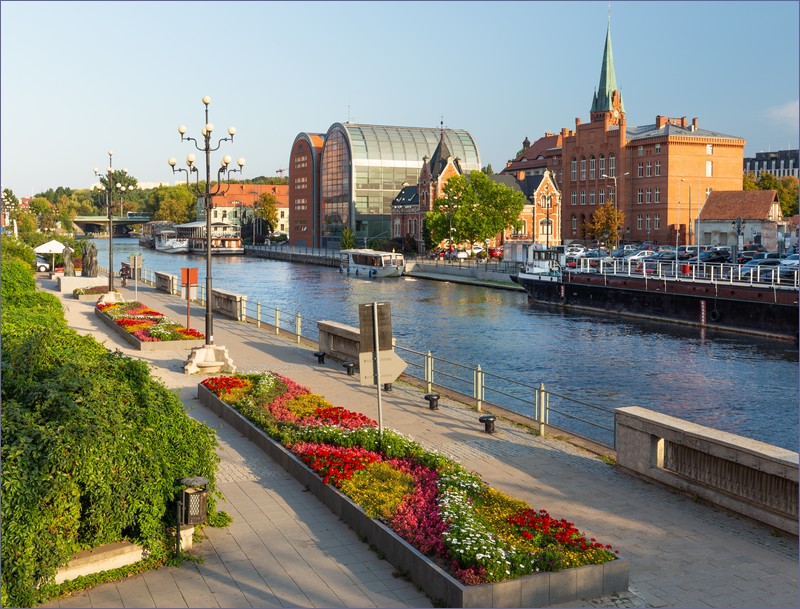
Day trips from Gdańsk by train – direction Malbork and Elbląg or Kwidzyn
A very popular train trip route from Gdańsk is the line through Tczew to Malbork. Trains on this section are very crowded. You can continue further to visit Elbląg, or continue the journey from Malbork to Kwidzyn. Beyond Malbork, trains tend to empty out. On the way to Elbląg, the train crosses the railway bridges over the Vistula River in Tczew and the Nogat River in Malbork.
Malbork – a city world-famous for the Teutonic Castle. Almost all the historic buildings were destroyed during World War II. Besides the rebuilt castle, attention should also be paid to one of the most beautiful railway stations in Poland. A few historic churches have survived, and among the surrounding architecture, the Polish Post Office building and former barracks stand out. Those interested in the city’s history should visit the Malbork City Museum.
From Malbork, you can take a bus to Nowy Dwór Gdański, from where the Żuławy Narrow-Gauge Railway operates.
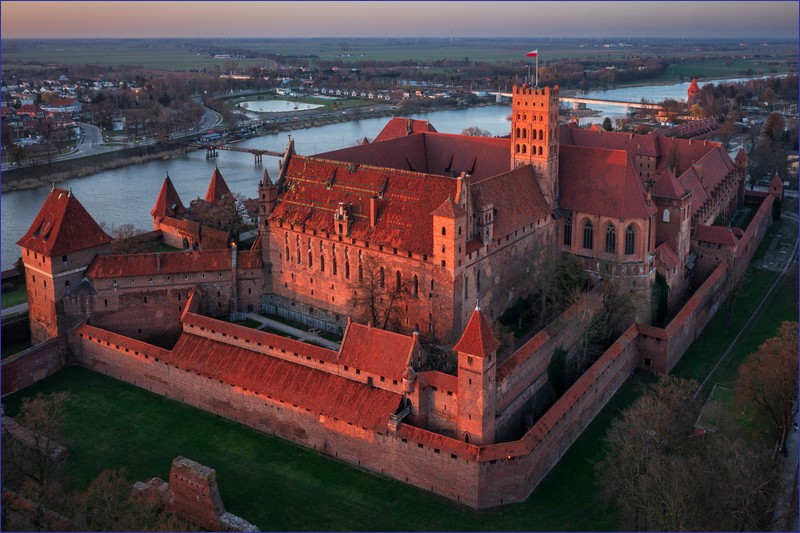
Kwidzyn (optional) – almost the entire city was also reduced to ruins during the wartime chaos of 1945. The main sight is the Castle of the Pomesanian Chapter (often mistaken for a Teutonic castle), built between 1320 and 1345, along with the Cathedral of St. John the Evangelist.
Elbląg (optional) – another city you can visit, although it’s not essential. The city center was largely rebuilt after the destruction of 1945, but it’s still not quite the same. The main landmarks are St. Nicholas Cathedral and the Market Gate (Brama Targowa), and it’s definitely worth visiting the Archaeological and Historical Museum. It’s unfortunate that trains no longer run on the scenic Elbląg – Braniewo railway line via Frombork along Vistula River Lagoon — the line had great tourist potential, currently there are draisines in Frombork during summer season.
Direction – Kościerzyna
Since 2015, it has become much easier to reach the Kashubia region by train from Gdańsk. Unfortunately, the railway still does not reach many interesting places, so it’s best to combine a train trip with a bicycle tour. The return of passenger trains to Bytów is rather unlikely.
Pępowo (optional) – the village of Pępowo should be a must-visit for automotive enthusiasts. A group of passionate individuals created and runs a small Volkswagen Museum with a collection of vintage cars.
Żukowo (optional) – it’s worth visiting the local former monastery church with its adjoining cemetery. Built in the 13th century, the church is the oldest architectural monument in Kashubia.
Kartuzy (optional) – a small town situated between two lakes, serving as a good base for hiking and cycling trips through the Kashubian tourist trails, often referred to as the “Kashubian Switzerland.” In Kartuzy itself, you can visit the collegiate church with a roof shaped like a coffin lid and the Kashubian Museum, which includes collections of folk costumes and toys, among other items.
Kościerzyna – a small town well worth visiting, known throughout Poland for its railway open-air museum, which is part of the Museum of the Kościerzyna Land. The main building of the Museum of the Kościerzyna Land is located in the former neo-Gothic town hall from 1845. In Kościerzyna, you can also find the Accordion Museum and a museum of old American cars. Notable religious monuments include the neo-Baroque Church of the Holy Trinity.
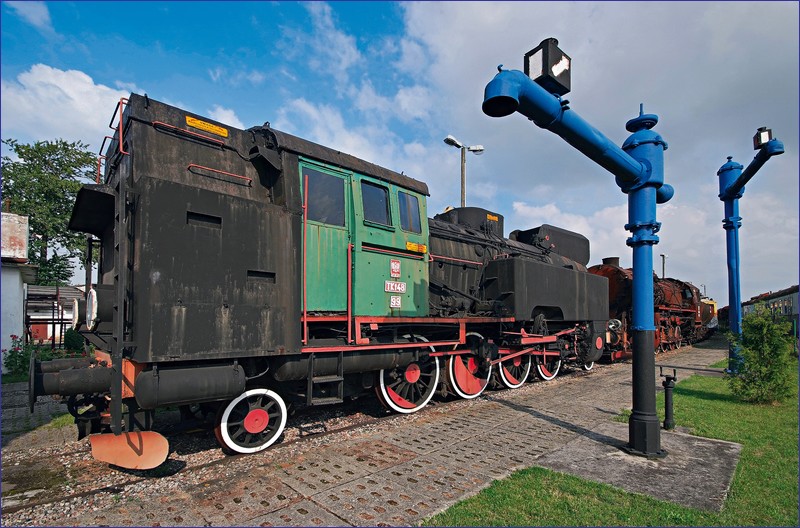
Direction Chojnice
You can reach Chojnice by train from Gdańsk either via Kościerzyna (very few connections between Kościerzyna and Chojnice) or via Tczew. Both routes have been described in previous sections. From Tczew to Chojnice, you travel along the Ostbahn, a line well known among railway enthusiasts. Along the way, it’s worth stopping in Starogard. Trains are often overcrowded between Gdańsk and Starogard
Starogard – a small town suitable for a few hours’ visit. The railway station has been renovated, and the area around the town square is quite nice. The main historic landmarks are the town’s defensive towers, the churches of St. Matthew and St. Catherine, and the neglected Wiechert Palace. In your free time, you can stroll along the trail in the Wierzyca River Valley or visit one of two museums: the Kociewie Region Museum or the 2nd Regiment of Light Cavalry Museum.
Chojnice – a lesser-known city with a charming town center located about one and a half kilometers from the train station. Some building façades feature decorative plant and animal motifs. The Historical and Ethnographic Museum is housed in the Człuchów Gate and a few other remaining elements of the old fortifications. Among the religious monuments, the most notable are the Basilica of the Beheading of St. John the Baptist, built in the mid-14th century, and the neighboring Church of the Annunciation of the Blessed Virgin Mary. In the summer, a local bus can take you to Lake Charzykowskie.
Just fifteen minutes away by bus or train (though there are very few trains) lies Człuchów. You can stop by briefly to visit the Regional Museum located in the remnants of the old castle or relax by the lake.
Direction Słupsk
Day trips from Gdańsk by train towards Słupsk are not as popular as those to the Hel Peninsula or Malbork. Along the route, I selected three cities worth visiting; additionally, during the summer season, you can also reach Łeba by train. However, I am not sure whether in this and the coming years only fast trains will serve Łeba, or if regional trains will also operate.
Wejherowo (optional) – a Kashubian town with a surprisingly well-maintained center and a charming market square, where you can find the Church of the Holy Trinity from 1755 with late Baroque altars and a town hall from 1908. The town’s most famous attraction is the Calvary of Wejherowo, with 26 chapels funded by the town’s founder, Jakub Wejher, in the mid-18th century. In the city park, you can also visit the Przebendowski Palace, now home to the Museum of Kashubian-Pomeranian Writing and Music.
Lębork – a small town with a few interesting sites in its center. Its most prominent landmark is the Teutonic Castle, which, at the time of writing this article, was closed to visitors. The Museum in Lębork, housed in a 1910 townhouse, has received excellent reviews and is well worth visiting. The town is also home to the Sanctuary of St. James, located along the Pomeranian Way of St. James. Recently, preserved fragments of the town’s defensive walls have been revitalized. The town hall from 1900 and the Church of the Blessed Virgin Mary Queen of Poland are also noteworthy.
Słupsk (optional) – a medium-sized city whose symbol is the town hall, known for its stained glass windows and murals depicting the city’s history. The Castle of the Pomeranian Dukes from the 16th century houses the Museum of Central Pomerania, renowned for its extensive collection of works by Witkacy. The castle complex also includes the Mill Gate and a granary. Fragments of the medieval defensive walls with city gates have been preserved.
Łeba (seasonal) – in summer, you can take a train from Lębork to Łeba, a popular seaside resort with beautiful beaches and interesting surroundings (no longer accessible by train). The city’s main attractions include the ruins of St. Nicholas’ Church from 1286, destroyed by a storm in 1570, the old Evangelical cemetery, the Avenue of Polish Presidents featuring bronze casts of the hands of all Polish presidents after 1989, and the house at 86 Kościuszki Street – the oldest house in Łeba. Nearby, you’ll find the Słowiński National Park and the Kluki open-air museum. More commercial attractions include the Garden Maze and the Butterfly Museum.
Day trips by train from Gdańsk – summary
The suggested day trips by train from Gdańsk do not exhaust all the possibilities, and the article may be expanded in the future. For some destinations, it’s better to use fast trains.
Related articles:
Train travel in Poland – a comprehensive guide
Narrow-gauge railways in Poland
Scenic railways in Poland
